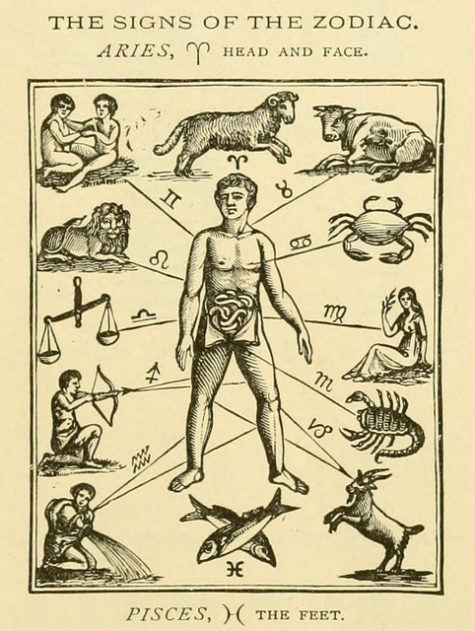Monthly Archives: April 2018
Floorwashes are an integral component of the Hoodoo and Conjure magical traditions. They combine actual physical house cleaning with spiritual and magical work, effectively killing two birds with one stone. They are potent yet discreet and perhaps the single most effective use of multi-tasking within magic.
Although the liquid is called floorwash, technically it refers to the final rinse used to clean a floor or other interior surfaces. It should not be removed but allowed to air-dry, so that its power radiates into the surrounding atmosphere. In other words, the floor should be clean before applying the floor wash.
The radiant power of the botanicals is what is crucial: floorwashes are a component of many spells for a variety of purposes, including protection and romance, in addition to their obvious value as a space cleansing device.
A floor wash is made by adding specifically chosen herbs, oils, crystals, and other ingredients to water and then using the solution to wash a surface. The reasoning behind this practice is to infuse the surface with the vibrations of the wash, so that it will then attract or dispel the corresponding energies. For example, if you were owed payment for services and the check was late, you might want to wash your mail box with a money-drawing wash.
There are two standard methods of making a floorwash. Choose which suits you:
- Fill a bucket with warm water. Add the magical infusion together with some white vinegar.
- Create the infusion and pour it into an empty bucket. Pour enough boiling salted water over it to fill the bucket. Add some white vinegar.
More recipes for magickal waters and washes can be found at the Magickal Apothecary.
Traditional methods call for you to scrub the floor on your hands and knees. The repetitive motion and low concentration level needed allow for a shift in consciousness to take place. Incorporating a chant as you wash will boost the powers of the wash and help your goal to manifest even faster. Remember to be as specific as possible in the wording of your chant.
Compiled from: Elemental Witch and The Element Encyclopedia of 5000 Spells
Every astrological sign has flowers associated with it. These might be, but are not necessarily the same as the flowers assigned to the specific months of the year, and some flowers are assigned to more than one astrological sign.
Here’s the list:
- Aries (March 21 ~ April 20) Honeysuckle
- Taurus (April 21 ~ May 20) Rose
- Gemini (May 20 ~ June 21) Rose; Violet
- Cancer (June 21 ~ July 20) Rhododendron
- Leo (July 21 ~ August 20) Gladiolas; Orchid; Lily of the valley; Lavender
- Virgo (August 21 ~ September 20) Aster; Gladiolas
- Libra (September 21 ~ October 20) Marigold; Acanthus
- Scorpio (October 21 ~ November 20) Chrysanthemum; Pansy
- Sagittarius (November 21 ~ December 20) Narcissus; Chrysanthemum; Sunflower
- Capricorn (December 22 ~ January 20) Carnation; Narcissus; Buttercups; Orchid
- Aquarius (January 21 ~ February 20) Violet; Carnation; Lily
- Pisces (February 21 ~ March 20) Jonquil; Violet; Poppy
Each part of the body is under the dominion of an astrological sign, from the head (Aries) to the feet (Pisces). The sign influences that part of that anatomy. In days long gone by, medical physicians were expected to have strong working knowledge of astrology.
Astrological Healing Waters consist of lunar-charged healing water, corresponding to the astrological signs. You can find that chart here: Astrological Bodily Correspondences.
Here’s how to make them:
Each month, on the night of the full moon, expose a glass bottle filled with pure spring water to the moonbeams. In the morning, label the bottle with the appropriate astrological sign. (or place in smaller bottles, then label.).
A solar water could also be made in much the same way. Expose a glass bottle filled with pure spring water to the sun’s rays beginning at sunrise and ending at sunset. Label the bottle (or bottles) appropriately and save for later use. Solar water will have a livening brightening effect, being energizing rather than healing.
Apply these waters to the parts of the body ruled by that astrological sign for healing purposes.
Note:
For the lunar charged water, you will be noting the astrological sign the moon is in rather than the astrological sign the sun is in. If the sun and moon happen to be in the same astrological sign, the effectiveness of the water would be enhanced. To calculate what sign the moon is in on any given day, you can use this nifty Moon Sign Calculator.
Dates given for each astrological sign are approximate, and indicate the SUN’s position in the sign; MOON signs vary greatly from year to year, and can be determined by referencing in an ephemeris, almanac, or Moon Sign Calculator.
- Aries (Mar 21 to Apr 20) Head, face
- Taurus (Apr 21 to May 20) Neck, throat, shoulders
- Gemini (May 21 to June 20) Lungs, hands, arms
- Cancer (June 21 to July 20) Breasts, stomach
- Leo (July 21 to Aug 20) Heart, solar plexus
- Virgo (Aug 21 to Sep 20) Digestive System
- Libra (Sep 21 to Oct 20) Kidneys, back
- Scorpio (Oct 21 to Nov 20) Reproductive and eliminatory organs
- Sagittarius (Nov 21 to Dec 20) Thighs
- Capricorn (Dec 21 to Jan 20) Knees, bones
- Aquarius (Jan 21 to Feb 20) Calves, ankles, circulatory and glandular systems
- Pisces (Feb 21 to Mar 20) Feet
- Ruler: Mars
- Type: Spice
- Magickal Form: ground, whole
Heat producing and fiery chili pepper makes a great lust ingredient. Add to coconut and chocolate to turn up the flames of desire. Place a circle of red peppercorns around a photograph of your lover to keep others away from him or her.
Pepper is also used for war and separation spells. Sprinkle white pepper in the corners of a room to overcome anger and dissension. Black pepper and peppercorns can hurt others or give protection. Black pepper mixed with salt and sulfur gets rid of someone you don’t want around.
Cayenne pepper makes a good boundary, and can be used to seal a sacred circle protecting those inside the circle from negative or harmful energies.
- See also: Peppercorns and Binding Agreements
One of the oldest and simplest spells in hoodoo is to throw ground black pepper and salt after departing witches or unpleasant people, to prevent them from returning. Sweeping the mixture out after them with a broom makes the trick stronger.
More Pepper Lore
It is bad luck to spill pepper because this will start a fight. The way to remedy this is by putting sugar on the spilled pepper, and leaving it there until it’s cleaned up.
It’s also bad luck to hand pepper to someone. it means you will have an argument with them. Alternatively, if you wish to create problems between a couple, you might be able to organize a situation whereby they hand each other some pepper, in which case, the argument is something you might want.
To prevent something nasty from happening, knock on wood while reciting “peppar, peppar, ta i trä” so they’re not jinxed. It means, “Pepper, pepper, touch wood.”
Sources:
- The Encyclopedia of Magickal Ingredients
- Hoodoo Herb and Root Magic
What follows is a dry and lengthy discussion about peppercorns as legal tender. I included it here at the Magickal Apothecary because it interested me and because I think the concept can be used in magick as well.
Consider this – you want to do magick, and you’d like to invoke the aid of a deity, an elemental spirit, or some magickal entity but you are unsure as to how to “seal the deal.” In a court of law, a “legal” contract, in order to be binding, requires that both sides provide consideration, and I think that in magick this could be true as well.
So, my thought is, that a peppercorn might be offered up when food, or other offerings are inappropriate or inadvisable. A tiny little peppercorn could be left anywhere! I think peppercorns could also be used in binding spells and rituals, as well as other types of magickal agreements.
The Dry and Lengthy Discussion from Wikipedia:
A peppercorn in legal parlance is a metaphor for a very small payment, a nominal consideration, used to satisfy the requirements for the creation of a legal contract. “A peppercorn does not cease to be good consideration if it is established that the promisee does not like pepper and will throw away the corn.” Somervell LJ in Chappell v Nestlé [1960] .
In English law, and other countries with similar common law systems, a legal contract requires that both sides provide consideration. In other words, if an agreement does not specify that each party will give something of value to the other party, then it is not considered a binding contract, and cannot be enforced in court. This requirement does not exist in contracts with civil law systems.
However, courts will not generally inquire into the adequacy or relative value of the consideration provided by each party. So, if a contract calls for one party to give up something of great value, while the other party gives up something of much lesser value, then it will generally still be considered a valid contract, even though the exchange of value greatly favors one side. Courts, however, will reject “consideration” that was not truly bargained for.
For example in the American case Fischer v. Union Trust Co., the Michigan court held that one dollar paid in exchange for the sale of real property did not constitute valuable consideration since the transaction was not bargained for. The dollar is considered nominal consideration, not because the dollar was too small an amount, but because it did not induce the seller to part with the property. Such promises that are motivated by love and affection are insufficient to constitute consideration.
So, in order for an essentially one-sided contract to still be valid and binding, the contract will generally be written so that one side gives up something of value, while the other side gives a token sum such as one pound, one dollar, or—literally—one peppercorn.
Peppercorn payments are sometimes used when a struggling company is sold. A failing company’s net worth may actually be negative, since its liabilities may exceed its assets. So if some other party agrees to take over the company and assume its liabilities as well as its assets, the seller may actually agree to make a large payment to the buyer. But the buyer must still make some payment for the company—even if that payment is only one dollar or one pound—in order to establish that both sides have given consideration.
A peppercorn is also used in more balanced contracts, where one side wishes to conceal the nature of their payment. For example, since real estate contracts are generally matters of public record, the purchaser of a house may not wish to list the exact amount of the payment on the contract. But there must be some specific payment listed in the contract, or the contract will be considered void for lack of consideration. So the contract may be written to reflect that the house is being sold in return for “ten dollars and other good and valuable consideration”. The ten dollars is the “peppercorn” that provides concrete consideration and ensures that the contract is valid, while the actual amount paid for the house is hidden and referred to only as the “good and valuable consideration”.
Another common example of a peppercorn payment being used in legal contracts is the English practice of peppercorn rent, which refers to a nominal rental sum for property, land or buildings. Where a rental contract is put in place and the owner of the property wishes it to be rent free it is normal to charge, say, one pound sterling as a peppercorn rent. Again, this is because, if the owner wants to lease the property, they must charge some rent so that consideration exists for both parties.
Furthermore, a peppercorn rent is often used as a form of nominal ground rent where a (potentially substantial) premium has also been paid on commencement of a long lease of, say, 99 or 125 years (a “virtual freehold”). The notional collection of the annual peppercorn rent helps to maintain a formal Landlord and Tenant relationship between the two parties, precluding the risk of a claim for adverse possession from the tenant arising, were no consideration to be paid for an extended period.









